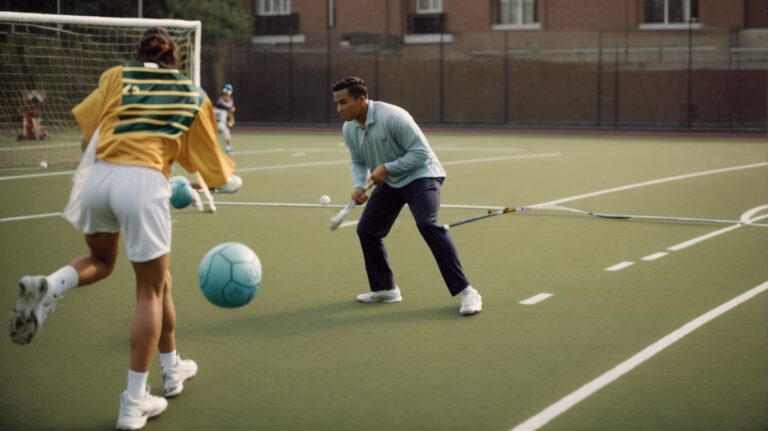Have you ever experienced the sharp, intense pain of stubbing your toe? It’s a universal experience that can bring tears to your eyes in an instant. But have you ever wondered why stubbing your toe hurts so much?
In this article, we’ll explore the psychology behind this common injury, from the nerve endings in your toe to the reflexive response from your brain. We’ll also discuss the common causes of stubbed toes, the symptoms to watch out for, and how to treat them effectively.
Let’s dive in and uncover the mysteries of the stubbed toe.
Contents
- 1 What Is a Stubbed Toe?
- 2 Why Does Stubbing Your Toe Hurt So Much?
- 3 What Are the Common Causes of Stubbed Toes?
- 4 What Are the Symptoms of a Stubbed Toe?
- 5 How Can You Treat a Stubbed Toe?
- 6 When Should You Seek Medical Attention for a Stubbed Toe?
- 7 Frequently Asked Questions
- 7.1 What causes the intense pain when you stub your toe?
- 7.2 Why does stubbing your toe seem to hurt more than other injuries?
- 7.3 Why do some people have a higher pain tolerance for stubbing their toe?
- 7.4 Can the psychological impact of stubbing your toe affect the pain experienced?
- 7.5 What role does adrenaline play in the pain of stubbing your toe?
- 7.6 Is there a link between psychological factors and the frequency of stubbing your toe?
What Is a Stubbed Toe?
A stubbed toe refers to the painful experience of accidentally hitting one’s toe against a hard object or surface.
This type of injury commonly occurs due to the sensitive nerve endings in the toe, making it particularly excruciating. When a toe is stubbed, the impact often results in an immediate sharp sensation of pain, followed by throbbing and swelling. Pain receptors in the area send signals to the brain, triggering a defensive response.
The sudden jolt can also cause temporary interference with one’s balance and mobility. Stubbing one’s toe can lead to bruising, discoloration, and tenderness around the affected area, further intensifying the discomfort. The Psychology Behind Stubbing Your Toe: Understanding the Pain
Why Does Stubbing Your Toe Hurt So Much?
Stubbing your toe causes intense pain due to the activation of nerve endings called nociceptors that send distress signals to the brain.
When you accidentally hit your toe against a hard object, the nociceptors in the area sense the damage and immediately fire off electrical signals towards the spinal cord. These signals travel with great speed through nerve fibers known as A-delta fibers, transmitting information about the acute injury to the brain.
As this rapid signal propagation occurs, the brain swiftly interprets these messages, resulting in the perception of sharp, stabbing pain. This type of pain, generated by nociceptors in response to actual or potential tissue damage, serves as a crucial warning signal to protect the body from harm.
Nerve Endings in the Toe
Nerve endings in the toe, consisting of sensory neurons and nerve fibers, play a crucial role in transmitting pain signals to the brain.
These specialized structures are responsible for detecting various stimuli such as temperature, pressure, and pain, converting them into electrical impulses that travel along the sensory neurons.
- Sensory neurons, also known as afferent neurons, transmit these signals from the toe to the spinal cord.
- Within the nerve fibers, there are different types such as A-delta fibers responsible for sharp, localized pain, and C fibers that convey dull, aching pain sensations.
These distinct types of fibers play a key role in how pain is perceived and processed by the brain.
Pressure and Impact on the Toe
The pressure and impact exerted on the toe, especially from body weight and sudden collisions, can lead to bone bruising and further activation of pain receptors.
When the toes are subjected to significant forces, the delicate bones within them can easily sustain damage due to the immense stress placed upon them. The body weight, combined with the forceful impact, creates a scenario where the bones in the toe area are at a high risk of bruising and potential fractures.
Bone structure plays a crucial role in determining the extent of the injury, as the small bones in the toes are vulnerable to the external forces that can easily overwhelm their capacity to withstand pressure. In such cases, the pain receptors in the affected area transmit signals to the brain, signaling discomfort and potential damage.
Reflexive Response from the Brain
The reflexive response triggered by the brain upon stubbing a toe involves a complex interplay of biology, psychology, and emotional control mechanisms.
When the nerve endings in the toe detect the sudden impact, the signal travels through the peripheral nervous system to the spinal cord at incredible speed. This initiates a cascade of neurotransmitters, including substance P and glutamate, to transmit the sensation through neural pathways to the brain.
Simultaneously, the brain activates the autonomic nervous system, leading to an increase in heart rate, secretion of stress hormones like cortisol, and the release of endorphins to modulate pain perception.
What Are the Common Causes of Stubbed Toes?
Stubbed toes commonly occur due to injuries resulting from accidental impacts against furniture, door frames, or other hard surfaces.
Accidental impacts on unprotected toes can cause painful injuries, leading to the term ‘stubbed toe.’
The lack of cushioning on the toes makes them vulnerable to direct hits on hard objects, resulting in immediate sharp pain and potential swelling.
Scenarios such as walking barefoot in dimly lit areas or hastily moving around cluttered spaces increase the likelihood of toe stubbing accidents.
In such situations, the toes face the risk of encountering unexpected obstacles, often resulting in sudden collisions and subsequent discomfort.
Clumsiness or Accidents
Instances of toe stubbing often stem from moments of clumsiness or genetic predispositions that affect coordination and spatial awareness.
Clumsiness, characterized by a lack of fine motor control and spatial perception, can lead to misjudged steps or collisions with furniture or objects, resulting in accidental toe injuries. Similarly, genetic factors play a significant role in determining an individual’s coordination abilities, with variations in genes impacting neuromuscular function and proprioception. These genetic influences can affect how well a person navigates their surroundings, potentially increasing the likelihood of toe stubbing incidents.
Poorly Designed Shoes
Ill-fitting or poorly designed shoes can increase the likelihood of stubbing toes, leading to discomfort and potential injuries.
When shoes are too tight, the toes are constrained, making it easier to accidentally bump them against hard surfaces. On the other hand, excessively loose shoes may cause instability and hinder precise foot movements, also increasing the risk of toe stubbing incidents. Shoe designs with narrow fronts or pointed toe boxes can exacerbate this issue by compressing the toes into unnatural positions.
Choosing footwear that offers adequate toe room and proper support is crucial to minimize the discomfort and decrease the chances of toe-related injuries.
Environmental Hazards
Environmental hazards such as obstacles, poor lighting conditions, and cluttered spaces contribute to the increased risk of stubbing toes in daily life.
When navigating through areas with uneven surfaces, unstable furniture, or scattered objects, it becomes easy to underestimate the distance and collision potential, leading to accidental toe stubbing incidents. Particularly in dimly lit environments, the lack of visibility can amplify the chances of mishaps, as one may fail to notice protruding obstructions or sudden changes in ground levels. In cluttered spaces where there is a mix of objects at varying heights, the likelihood of collisions with toes escalates significantly.
What Are the Symptoms of a Stubbed Toe?
Symptoms of a stubbed toe typically include immediate pain, swelling, and possible bruising in the affected area.
When a toe is stubbed, the sudden impact can cause intense pain that is often described as sharp or throbbing. The swelling that follows is a common reaction of the body’s natural inflammatory response, as it rushes blood and fluid to the injured area to promote healing. Additionally, bruising may develop over time, as small blood vessels break due to the trauma, leading to discoloration of the skin. It is crucial to rest the injured toe and elevate it to reduce swelling, apply ice to alleviate pain, and monitor for any worsening of symptoms to ensure proper healing.
Pain and Tenderness
The primary symptoms of a stubbed toe manifest as intense pain and tenderness due to the sensory nerve signals triggered by the injury.
When a toe is stubbed, the delicate nerve endings in the area immediately relay a sharp signal to the brain, registering a sudden impact and pressure on the affected region. This signal is interpreted by the brain as pain, triggering immediate protective responses such as withdrawal reflexes and heightened sensitivity in the surrounding tissues. The tenderness that accompanies the pain is a result of inflammation and increased blood flow to the injured site, a natural response aimed at promoting healing and reducing further damage.
Swelling and Bruising
Stubbed toes can lead to swelling and bruising caused by the impact trauma that damages blood vessels in the toe area.
When the toe gets stubbed, the force of the impact can cause blood vessels to rupture, leading to bleeding beneath the skin. This accumulation of blood results in the characteristic purple or blue discoloration of a bruise. The body’s response to this trauma triggers an inflammatory process, where blood vessels dilate to allow more immune cells to reach the injured area, causing swelling. This swelling, known as edema, is a protective response that helps support tissue healing by bringing nutrients and oxygen-rich blood to the site.
Difficulty Walking or Putting Pressure on the Toe
Stubbed toes may result in difficulty walking or bearing weight on the affected toe due to mobility restrictions and pain from the injury.
In such cases, individuals experience a range of functional limitations that can hinder their daily activities. The pain stemming from a stubbed toe can cause discomfort even with a slight movement, making it challenging to put weight on that foot. This can lead to altered gait patterns, as the body naturally tries to compensate for the discomfort in the injured toe.
The pressure exerted on the stubbed toe can trigger sharp, shooting pains, impeding the individual’s ability to stand or walk normally. The combination of restricted mobility and the sharp jolts of pain can significantly impact one’s quality of life and overall mobility.
How Can You Treat a Stubbed Toe?
Treating a stubbed toe involves measures like rest, ice application, and the use of over-the-counter pain relief medication to alleviate discomfort and promote healing.
Resting the impacted toe is particularly crucial to prevent further injury and allow the body to repair itself. By giving the toe sufficient time to recover, one can avoid exacerbating the pain and swelling. Ice therapy, such as applying an ice pack for 15-20 minutes several times a day, helps reduce inflammation and numbs the area to alleviate pain.
Using over-the-counter pain relief methods like ibuprofen or acetaminophen can provide additional relief from the discomfort associated with a stubbed toe. These medications can help manage pain and swelling, ultimately aiding in a speedier recovery process.
Rest and Elevation
Resting and elevating the injured toe help reduce inflammation and promote the recovery process following a stubbed toe incident.
When you rest, you give your body the chance to divert energy towards healing the damaged tissues in the toe. The process of elevation helps to reduce swelling by allowing fluids to drain away from the injured area. By combining rest and elevation, you create an optimal environment for healing and reduce the risk of further inflammation spreading to surrounding tissues.
This approach can accelerate the healing process by improving blood circulation, delivering essential nutrients and oxygen to the injured area. Proper recovery is crucial in preventing long-term damage and ensuring that the toe regains its functionality without complications.
Ice and Compression
Applying ice and compression to the stubbed toe aids in reducing swelling and providing cold therapy to alleviate pain and discomfort.
Swelling is a common response to injuries like a stubbed toe, as it is the body’s way of protecting and healing the affected area. Ice helps by constricting blood vessels, slowing down blood flow to the injured toe, which in turn reduces swelling. The cold temperature also numbs the area, decreasing pain sensations. Compression further assists in preventing excessive fluid buildup and promotes quicker healing. Combining ice and compression is an effective first-aid method to manage the immediate aftermath of a toe stub, facilitating a speedier recovery.
Over-the-Counter Pain Relief
Over-the-counter pain relief medications available at pharmacies can help manage the discomfort and pain associated with a stubbed toe.
These medications, such as ibuprofen, acetaminophen, and naproxen sodium, are commonly used for their anti-inflammatory and pain-relieving properties.
- Ibuprofen, a nonsteroidal anti-inflammatory drug (NSAID), can reduce inflammation at the site of the injury, thereby alleviating pain.
- Acetaminophen works on the brain to decrease the perception of pain, making it effective for mild to moderate pain relief.
- Naproxen sodium is also an NSAID that helps with pain and inflammation.
It’s important to follow the recommended dosage and consult a healthcare professional for proper guidance on using these medications.
When Should You Seek Medical Attention for a Stubbed Toe?
Seek medical attention for a stubbed toe if you notice signs of infection, severe damage, or if your pain threshold exceeds manageable levels.
In terms of the signs of infection, redness, warmth, tenderness, and the presence of pus around the injured area indicate a need for professional evaluation.
If the stubbed toe shows signs of severe damage such as deformity, inability to bear weight, excessive swelling, or if there is a visible open wound exposing bone or tissue, immediate medical attention is crucial.
Individual pain thresholds vary, but if the pain is persistent, excruciating, not alleviated by rest or over-the-counter pain medications, or if there is numbness or tingling, seeking medical help is advisable to rule out any underlying severe injury or complications.
Frequently Asked Questions
What causes the intense pain when you stub your toe?
The sudden intense pain experienced when stubbing your toe is due to the activation of sensory nerve fibers in the area. These fibers send signals to the brain, alerting it to potential injury and causing the sensation of pain.
Why does stubbing your toe seem to hurt more than other injuries?
Stubbing your toe is a unique type of pain because it involves a sensitive part of the body and a high concentration of nerve endings. Additionally, the foot has a large number of pressure receptors, making the pain feel more intense.
Why do some people have a higher pain tolerance for stubbing their toe?
Individuals with a higher pain tolerance may have developed coping mechanisms or techniques to deal with the pain. They may also have a different perception of pain due to factors such as genetics or previous experiences.
Can the psychological impact of stubbing your toe affect the pain experienced?
Yes, the psychological response to stubbing your toe can affect the pain experienced. For example, if you are expecting the pain to be excruciating, you may experience more intense pain than someone who is not anticipating it.
What role does adrenaline play in the pain of stubbing your toe?
Adrenaline, also known as the fight or flight hormone, is released when we experience pain. This can heighten our senses and make us more aware of the pain, leading to a more intense experience when stubbing your toe.
Is there a link between psychological factors and the frequency of stubbing your toe?
While there is no direct link, individuals who are more anxious or stressed may be more prone to accidents or clumsiness, leading to a higher likelihood of stubbing their toe. Additionally, individuals who are more aware of the pain may be more likely to remember and report stubbing their toe.






